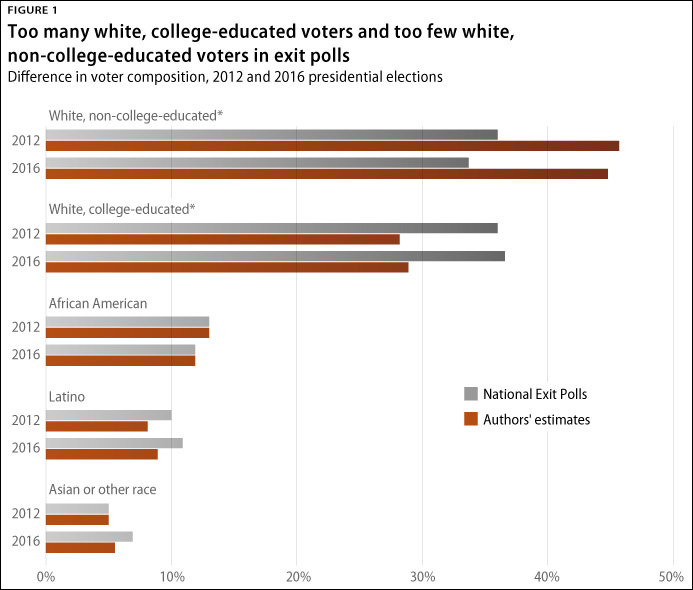Ruy Teixeira has performed his own analysis of recent elections and offers this conclusion about the Alabama Senate race won by Doug Jones:
Jones’s triumph was not attributable to his strong showing among black voters alone, or even a combination of black voters and white college graduates. My analysis indicates that Jones benefited from a margin swing of more than 30 points among white non-college voters, relative to the 2016 presidential race in the state. The swing toward Jones was for sure even larger among white college graduates. But without the hefty swing among the white non-college population, particularly women, there is no way Jones would have the state, or even come close.
It was the huge swing among white voters who couldn’t stomach Roy Moore that powered Jones to victory. This doesn’t make the organizational or turnout efforts among blacks any less important, but it does mean that it wasn’t really the key to Jones’s victory. It was white votes.
Now, the circumstances in Alabama were obviously pretty special. Moore was not as popular as your usual white Republican in the first place, and after the sexual assault allegations he became such a pariah that it was at least possible for a Democrat to win. Obviously Democrats can’t count on that sort of thing very often. However, in a longer analysis done for the Center for American Progress, Teixeira and two coauthors argue more generally that the 2016 exit polls badly misjudged the turnout of various demographic groups, and that the white working class is actually more important than even conventional wisdom has it:

This is controversial for two reasons:
- It suggests that working-class whites were a far bigger share of total turnout than anyone guessed.
- Latino turnout wasn’t bigger than the exit polls say. It was smaller.
We’re going to see a lot of reports like this one over the next few years as more data becomes available. In this case, the authors based their conclusions on “a multitude of publicly available data sources including the American Communities Survey (ACS), the November supplement of the Current Population Survey (CPS), the American National Election Study (ANES), the Cooperative Congressional Election Survey (CCES), our own post-election polling, and voter files from several states.”
I don’t have the chops to judge the methodology in this report, but others can and will. The key thing here is to conduct this argument without ideological blinders. Latino lobbies aren’t going to like the idea that their turnout is lower than everyone assumes. The progressive wing of the Democratic Party isn’t going to like the idea that working-class whites still retain enough power that they have to courted. And maybe it will turn out that Teixeira is wrong about this. But burying our heads in the sand won’t help. Much of politics is about passion and vision, but this particular part isn’t. It’s about detached analysis and the best possible data. Let the games begin.

















